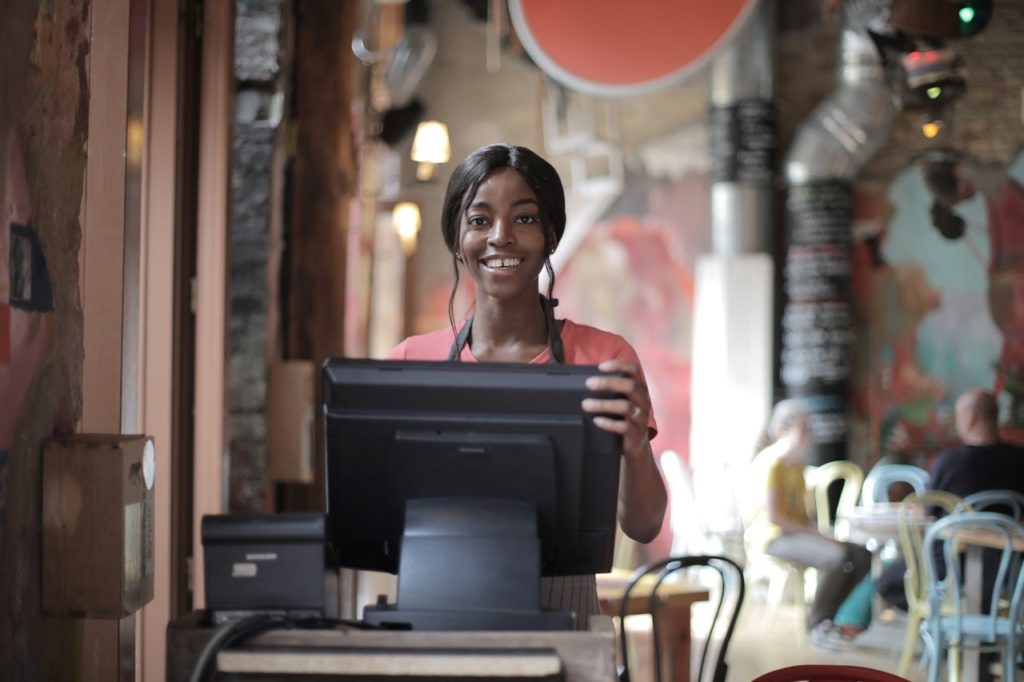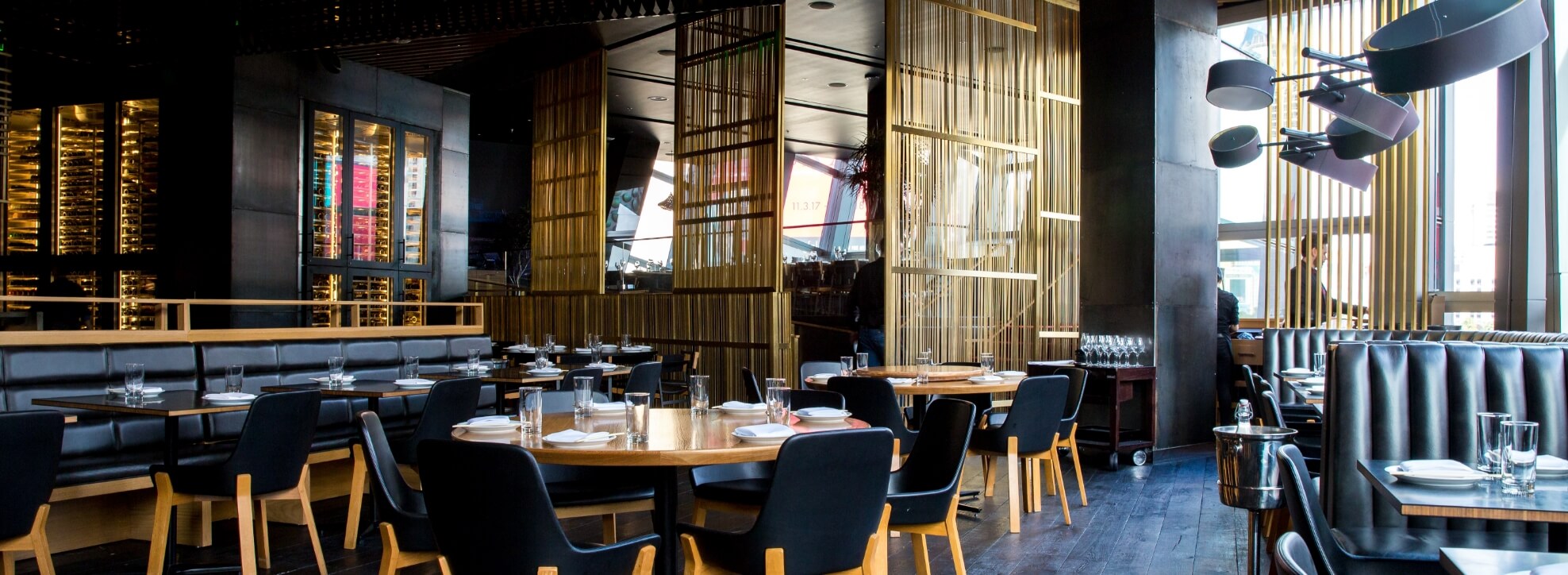
How Does a Restaurant Online Ordering System Work?
Curious about the restaurant’s online ordering process? Let’s pull back the curtain so you can see the entire process from the customer’s initial online order to pick up.
What is a Restaurant Online Ordering System?
The COVID-19 pandemic has made online ordering particularly important for restaurants, as we wrote in our post on the advantages of online food ordering systems. Allowing customers to order their own food online cuts down on errors, improves the customer experience, saves your restaurant money, and can minimize in-person contact to reduce disease transmission risk.
POS systems’ online ordering features should make it easy for customers to order food via your website, whether they want to pick it up or have it delivered.
The best POS programs will also allow you to design and organize your restaurant’s menu the way you want it, allowing you to customize the look, name the sections, and choose highlighted dishes.
If you have multiple locations, a good POS system will also allow you to make changes across those locations simultaneously, or customize each location’s menu.
Three Types of Restaurant Online Ordering Systems
As mentioned above, there are three main methods that your customers can use to remotely order items from your restaurant. Either they can call you directly, place an order on your site, or go through a third party’s site or app. Seems simple enough. However, there are also three different ways that your restaurant can receive and process these orders.
If the order is placed through your website…
Offering your customers a way to order through your website is convenient for them but also means added revenue for you. (We’ll explain why in a moment.)
Online ordering through your restaurant’s website is pretty straightforward. After finding the appropriate menu on your website, your customer will then place the order there without leaving your website.
Pros:
- You control your customer’s experience because they remain on your website the entire time.
- Because the customer completes the transaction on your website, you won’t need to share profits with a third party.
Con:
- Decreased visibility. If you’re not accessible on third party websites (but your competitors are), you may potentially lose out.
If the order is placed through a third party website/ app…
There are a host of third party websites, including DoorDash and Uber Eats, that enable customers to order items from a huge list of local restaurants. Customers can browse menus and then order directly through the app. These orders are typically delivered through independent drivers hired by the service.
Pros:
- Increased visibility. New customers may discover your restaurant for the first time by using the app.
Cons:
- More work for your staff. They’ll need to check notifications from the third party app and then manually enter the ordering information as it comes.
- Sometimes, third party apps may sell an item that’s no longer available. When this happens, you’ll need to notify the customer, which can be frustrating for them and impact your reputation.
- You don’t control the customer’s experience, including how the payment is processed and how the food is delivered. As a result, the customer may have an undesirable experience based on factors out of your control, and attribute that negativity to you.
If the order is placed through a third party website/ app with Point of Sale (POS) integration…
The final option is a blend of the above two. In this option, the third party online ordering platform integrates with your POS. This eliminates the extra step of your staff processing an incoming order manually. The two systems (your POS and the third party platform) communicate directly with each other. This results in a smoother ordering experience for both your customers and you.
Pros:
- The same as above, increased visibility on the app’s marketplace.
Cons:
- The same as above, except your system is updated in real-time which eliminates awkward phone calls when an item is unavailable.
How Does Restaurant Online Ordering Work?
Now that we’ve gone over the basics, let’s take a closer look at how online ordering works in detail.
Step 1: Your Customer Accesses the Menu
The first step is initiated by the customer. They access your online menu using either their computer or smartphone. They then select the item they’d like to order, add special instructions to the order, and finally pay for the order. You may have the option to pay online or to pay in person. If they choose to pay through the system, they’ll need to add their credit card information. The payment is then processed securely through a third party.
Step 2: Your Customer Finalizes Order
After the payment is processed, the system automatically shares a receipt to your customer that verifies payment approval. This notification may also show detailed information about what the customer ordered and when the order will be ready for pick up.
Step 3: The Order Is Sent to Your Kitchen
While the customer receives their order confirmation, their order is also sent to your kitchen display system.
Step 4: The Order Data is Stored
While the customer’s payment information is generally not stored, you will have access to order data about the customer, specifically their contact information, what they’ve ordered, and the type of payment they used. This data can be used to create an individual record for that customer. You can use this information for reference if the customer makes an order in the future. For example, on your website, you can auto-fill certain fields to make it convenient for your customer to order.
Step 5: Your Inventory is Automatically Adjusted
By using an online ordering system, you can also track inventory. This ensures that you never run out of a menu item by accident.
Step 6: Your Customer’s Delivery Information is Automatically Populated
The customer can choose to order takeout or delivery. For delivery orders, the restaurant online ordering system will display the customer’s address and any special instructions for the driver.
Step 7: Customer Receives Notification That Their Order is Ready
Once the kitchen has completed and packaged the order, the customer receives a notification that their order is ready for pick up or is out for delivery.
What are the Benefits of Implementing a Restaurant Online Ordering System?
Why should you consider upgrading to an online ordering system as opposed to relying on call-in orders or third-party apps? Here are a few major benefits to enabling customers to order through your restaurant’s website:
It's Expected
The internet is no longer new and strange. More than 50% of adults under the age of 44 have used the internet to order takeout or delivery. Your customers expect to be able to place an order online, and are disappointed if they need to call in instead.
You Can Learn More About Your Customers
When you take online orders for your restaurant, you can get hard data about your customers, such as what days and times they’re most likely to order and the average order amount. This information can help you improve your future marketing to these customers and prospective customers with similar traits.
You Will Improve Your Customer Service
By offering online ordering through your restaurant’s website, you can control how customers experience your service. You can run promotions and make upsells based on specific orders. Customers can take their time when ordering online without feeling rushed by the staff or a growing line. They can ponder over the different menu items to find the right one.

You Will Also Improve Order Accuracy
Humans make mistakes but computers don’t. By allowing customers to place their own orders through your system, you’ll reduce ordering errors, at least on your end. The only order mistakes that happen are those from the customer themselves. But they’ll have a final chance to review before placing the order. Your online ordering system will improve the overall accuracy of orders.
You Can Generate More Revenue
Offering online ordering is a money maker because it encourages customers to spend more time looking over your menu. When onsite, a customer may feel rushed to make an ordering decision. Even if your staff doesn’t intentionally push them to order, the customer may rush anyway.
But online, the customer has more time to review what you offer and think about what they want. This can lead to them purchasing even more than they would in person because they see how affordable that dessert is. And they may be especially persuaded by a pop up coupon at the end of the ordering process.
You Can Also Save Money
While being accessible on third party apps does increase your visibility, you will have to pay fees on every sale. Those fees can eat up as much as 30% of your profits. By having your own online ordering system, you can keep all of that earned revenue.
Final Thoughts
By implementing an online ordering system, you’ll improve your customer’s experience with your restaurant and increase your revenue.
If you’re thinking seriously about adding an online ordering system to your restaurant’s website, check out what we have to offer at Truffle POS.
Book your free 30 minute demo of Truffle POS in action here.



